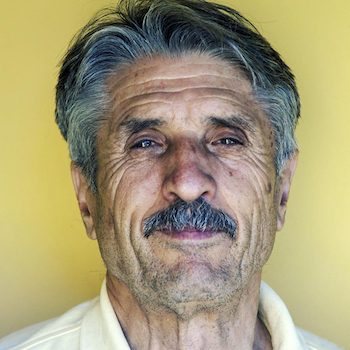
Health
All-or-Nothing Approach an Ill-advised Gamble for Public Health
West Virginia, one of the poorest states in the United States, is facing a twin crisis – it’s at once the epicentre of America’s opioid crisis and the site of a significant HIV outbreak. The situation is particularly tragic because the public health emergency likely could have been avoided, had policymakers looked at the science and endorsed successful harm reduction initiatives rather than vilifying them.
Sadly, this is just a particularly acute example of a worrying trend around the world. Even in Europe, overall more forward-thinking on public health issues, lawmakers are falling short by failing to integrate reduced-harm products like e-cigarettes into their efforts to stamp out the tobacco habit that claims the lives of 700,000 Europeans each year. Canada, meanwhile, has latched onto the fact that vaping is an essential tool to achieve a smoke-free generation—but even there, provincial and federal governments are not backing up their commitment to harm reduction strategies with the funding required. To achieve real success, policymakers must take a more realistic and nuanced approach to public health by prioritizing incremental improvements and reduced risk over unrealistic hopes.
An entirely avoidable epidemic
In West Virginia’s Kanawha County, the number of new drug-related HIV-positive diagnoses doubled from 2019 to 2020. Last year, the county’s 35 diagnoses—which officials are speculating is merely the tip of the iceberg of unreported infections—rivaled case rates in metropolises 150 times larger. Tragically, the rapid spread of the disease is largely the result of misguided public policy—indeed, the surge can be traced back to the closure of the county’s official needle exchange in 2018.
Decades of research has revealed that needle exchanges reduce the harm from drug use in a number of ways: they slow the spread of diseases like HIV, curb overdose deaths and make it more likely that drug users will seek treatment. West Virginian authorities, however, shut the center down, arguing that it encouraged drug use—despite research debunking this theory. Volunteer organisations have attempted to fill the void, but a new bill passed earlier this month has clamped down on their operations by forcing them to jump through an unreasonable number of regulatory hoops. Public health experts have warned of what’s sure to come next: a devastating wave of health consequences, including the exponential growth of HIV cases.
Vilification without foundation
American lawmakers’ impractical stance towards drug use stands in marked contrast to many European countries. Portugal, for example, decriminalised the possession of small amounts of drugs in 2001—and has seen dramatic drops in HIV infections, overdoses, and drug-related crime since, while the number of people seeking treatment has soared.
Portugal’s insistence on treating drug abuse as a disease rather than delinquency is a powerful blueprint to follow, but Europe doesn’t always get its attitudes right on harm reduction. Take nicotine consumption, for example; the EU has 12 times as many smokers as vapers, despite the fact that the latter practice is far safer and indeed has shown remarkable results in helping people to kick the habit altogether.
European policymakers’ failure to endorse reduced-harm devices has had dangerous consequences: some 59% of Europeans erroneously believe that vaping is as risky or riskier than smoking, though extensive studies have found that e-cigarettes are 95% less harmful than conventional tobacco products. What’s more, they have been found to be twice as effective in allowing people to quit smoking than any other method. In 2017 alone, over 50,000 Britons stubbed out their final cigarette by using vaping as a transitional device.
Despite this, the EU’s recent “Beating Cancer Plan” does not incorporate the use of harm-reduction devices like e-cigarettes, drawing severe criticism from addiction specialists who cannot understand the snub and have warned that the EU’s dream of a smoke-free generation will be impossible to achieve without embracing harm reduction.
Two steps forward, one step back for Canada
In Canada, meanwhile, regulators seem savvier to the potential benefits of alternative ways of reducing tobacco consumption, with the recently introduced Tobacco and Vaping Products Act viewed as a key component of achieving their target of bringing down smoking rates to below 5% of the populace by 2035. Nonetheless, a widely discredited BMJ study attempting to link e-cigarette use with youth smoking seems to have spooked politicians. Although the paper’s authors have since acknowledged and corrected the errors in their work, funding has not been forthcoming to support vaping in subsequent budgets—a tragic error which could seriously set Canada’s fight against smoking back.
Indeed, it’s not just on tobacco that Canadian officials have been unwilling to back up common sense initiatives with cold hard cash. A mere 1% of the Ministry of Health’s annual budget has been earmarked for addressing addiction. Saskatchewan’s only supervised drug consumption location, for example, has not been awarded a single penny—despite extensive evidence that such centers save both lives and money.
A compassionate and realistic approach needed
The fact that Saskatchewan suffered at least 345 drug toxicity deaths in 2020 (the most on record) shows that the rug is being pulled from under the feet of those most in need, when they need it most. It’s the same story as the avoidable HIV epidemic that’s currently ravaging West Virginia – and the financial reasons for supporting harm reduction strategies ably support the humanitarian ones. U.S. research, for example, has demonstrated that every dollar spent on treatment programs saves over a dollar in crime reduction costs, while investment in syringe exchange initiatives yields a 600% return on HIV-related expenses alone.
So why, then, do politicians all over the globe refuse to listen to the science and insist on an all-or-nothing approach to risky behaviours? The logic behind those types of entrenched arguments seems to be that if you can’t be perfect, there’s no value in being better – but all the evidence proves otherwise and indicates that policymakers from West Virginia to Brussels to Saskatoon must favour a rational approach to safeguard their citizens’ health.

